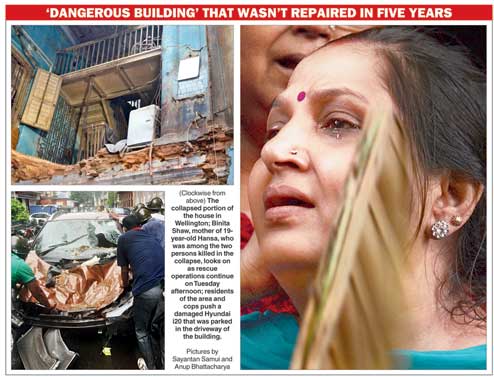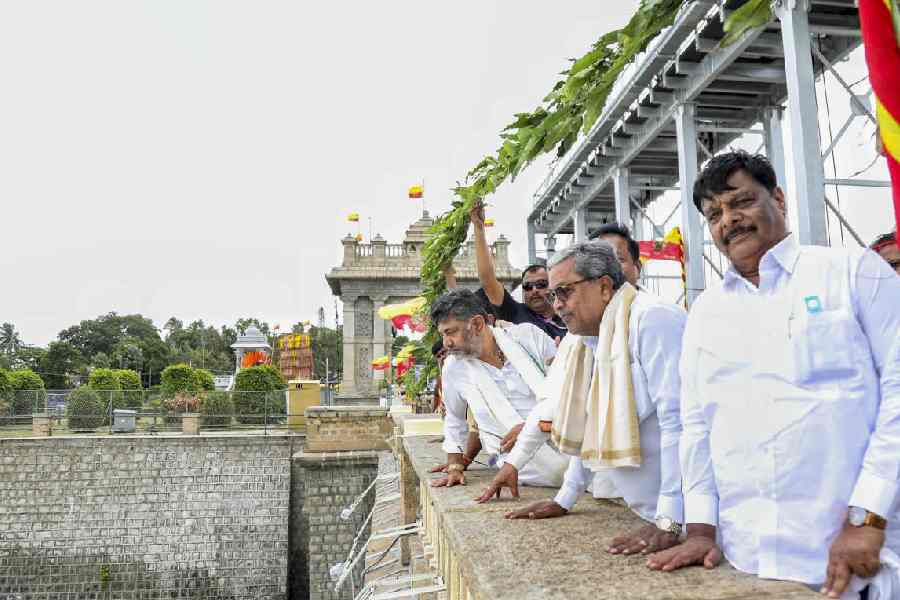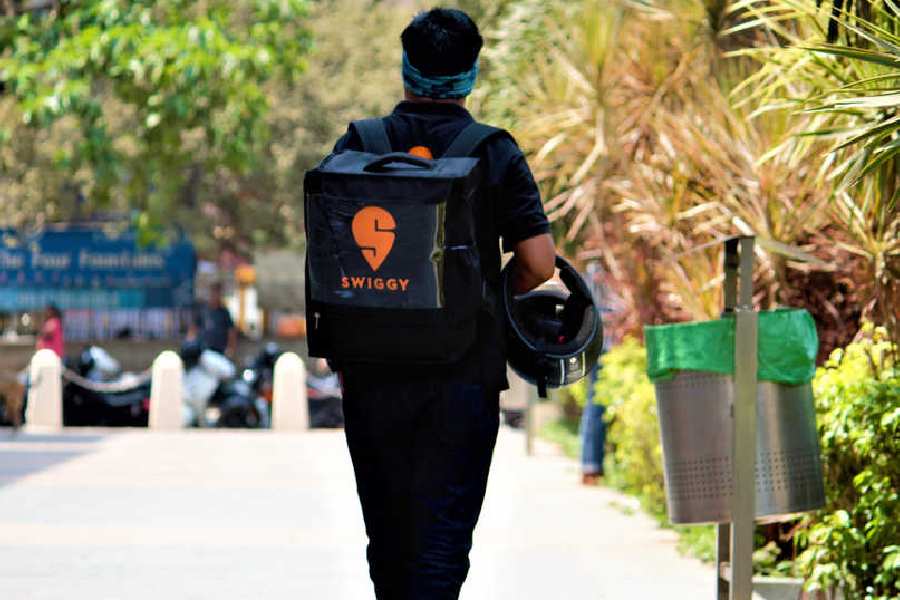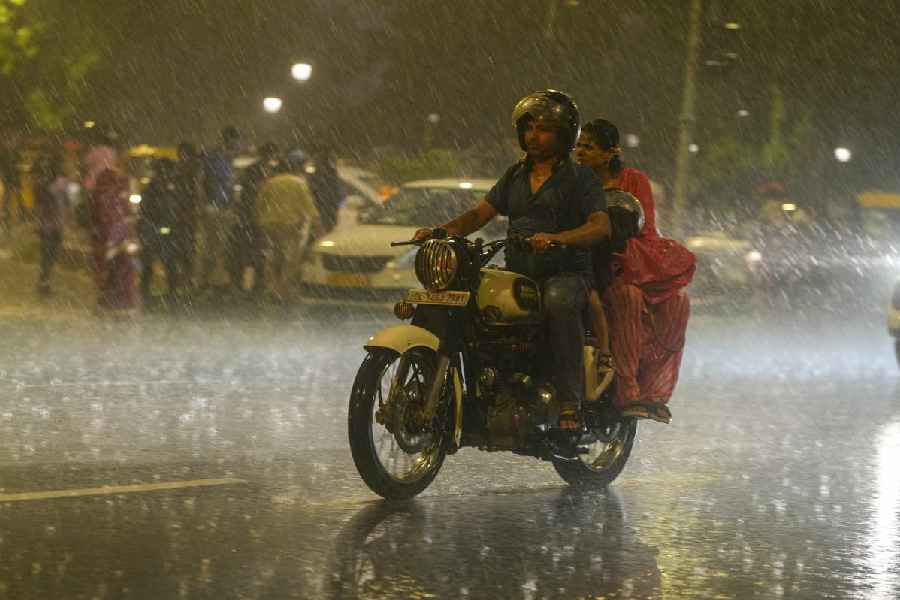July 24: Calcutta barely kept its head above the water on a day of unyielding rain that varied from a downpour to a drizzle and seldom paused to provide some respite from waterlogging.
The two rain factors - a low-pressure system and an accompanying trough - continued to pull moisture inland from the Bay of Bengal until late tonight, raising the possibility of more rain over the next two to three days.
The only sign of relief in the forecast was the diminishing possibility of heavy rainfall from Tuesday.
Metro highlights why it has rained heavier than normal this July and how the progress of the monsoon compares with that in recent years.
How much did it rain today?
The Alipore weather office recorded 63mm of rain from midnight on Sunday to 7pm today. The amount of rainfall in central Calcutta was higher than in the rest of the city, with New Market alone recording 85.3mm in the same period.
The rain count since Saturday stands at 191.2mm, which is about half the total "long-term normal" of 396mm in the wettest month of the year in Calcutta.
Elsewhere, Bankura received 65mm of rain between 8.30am and 5.30pm today. The intensity of rainfall had been much higher on Sunday, when the district received 110.1mm in 24 hours. In the same period, Canning received 101mm, Dum Dum 76.5mm and Midnapore 77mm.
What are the weather systems at play?
The key factor is a low-pressure area spread over Gangetic Bengal and adjoining Jharkhand, and moving slowly westward. The circulation embedded in this system extends to 9.5km, making it an exceptionally strong weather system that is drawing a lot of moisture from the Bay.
A trough of low pressure from Bikaner in Rajasthan to northeast Bay of Bengal has also played a role in the wet spell. The trough is currently passing over Jharkhand and Gangetic Bengal.
Jamshedpur in Jharkhand received 70mm of rain in less than 12 hours from 8.30am.
What is in store for Calcutta?
Since Saturday, the city has received more than 60mm of rain every day. But this could change. "Moderate" rainfall has been forecast for Tuesday, which translates into "up to 60mm" in a day. In meteorological terms, rainfall between 61 and 120mm is categorised as "heavy" while anything above 120mm is called "very heavy rainfall". Beyond 200mm, rainfall is categorised as "extremely heavy".
The western districts of Bengal are likely to receive "heavy to very heavy" rainfall on Tuesday.
Darjeeling, Kalimpong, Jalpaiguri, Alipurduar and Cooch Behar could receive "isolated heavy rain".
How rainy has this July been?
July could end up as the rainiest in a decade, although 2015 still tops the table. Till this evening, the total rain count for this month stood at 558.5mm, which is 264mm more than the average for July and works out to a surplus of 90.1 per cent.
In the last 10 years, only in 2015 was there more rain in the whole of July than what has already been recorded. But even that year, till July 24, there was less rain than this year at 443.1mm.
Is rain alone causing waterlogging?
The confluence of rain and high tide in the Hooghly raises the possibility of flooding. Today's high tide on the Hooghly - it was the second spring tide of the month - peaked at 1.57pm, when the intensity of the rainfall was the highest. Since the lock gates cannot be opened during high tide, drainage is compromised.
"During spring tide, the gates are kept closed for an extra one or two hours," said an engineer.
There were three heavy spells of rain today and they caused flooding on some roads each time. Apart from the usual suspects like Thanthania and MG Road, parts of Kidderpore and Diamond Harbour Road were inundated.











